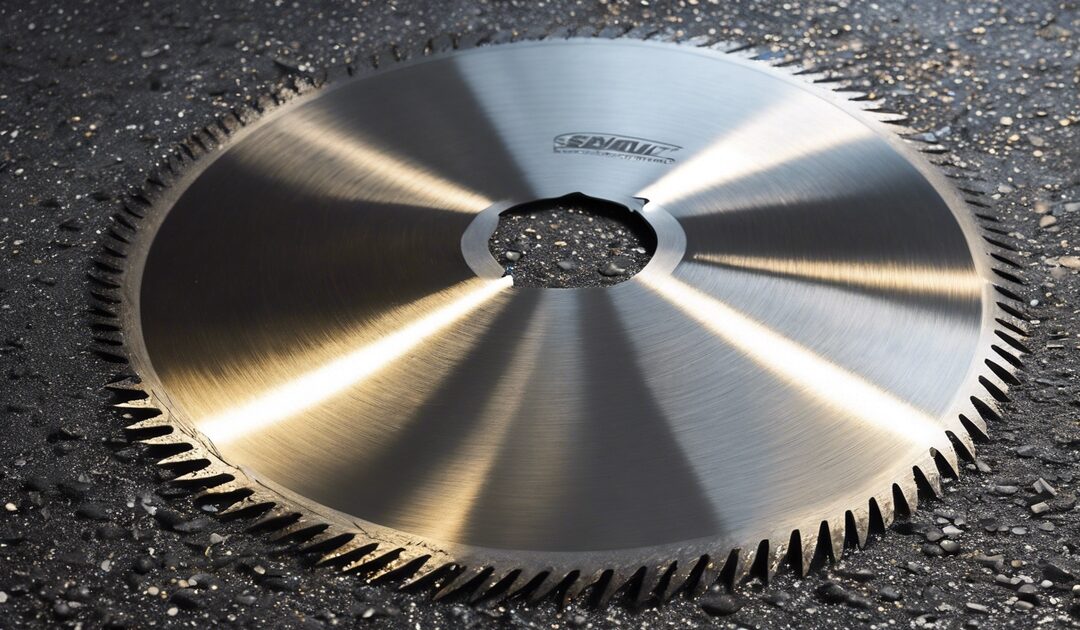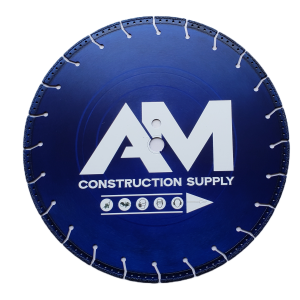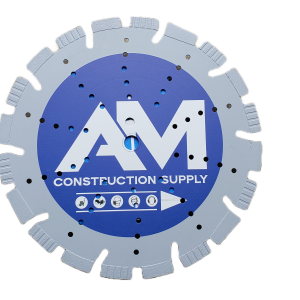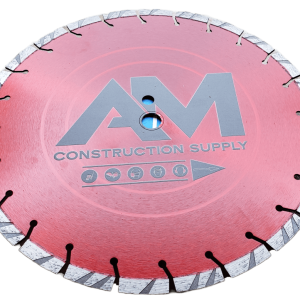When it comes to cutting through tough surfaces, not all blades are created equal. The 24 inch asphalt saw blade stands out in a league of its own, designed specifically for slicing through asphalt with precision and ease. Unlike standard blades that struggle with the dense, abrasive material, this powerhouse effortlessly makes clean cuts, saving time and reducing wear on equipment. Whether you’re a professional contractor tackling road repairs or a DIY enthusiast embarking on a paving project, understanding the capabilities and features of the 24 inch asphalt saw blade is crucial. Dive into the world of high-performance cutting tools and discover how this blade can transform your work.
Key Takeaways
- When selecting a 24-inch asphalt saw blade, prioritize features such as diamond content and segment design for optimal cutting performance and durability.
- Proper installation of the blade on your saw is crucial; ensure compatibility and follow manufacturer guidelines to avoid accidents and equipment damage.
- Employ recommended cutting techniques, such as gradual penetration and appropriate water usage, to enhance cutting efficiency and extend blade life.
- Regular maintenance, including cleaning and inspection for wear or damage, is essential to maintain the blade’s cutting effectiveness and safety.
- Extend the lifespan of your asphalt saw blade by adhering to best practices like avoiding overheating and ensuring proper storage conditions.
- Always follow safety guidelines, including wearing appropriate personal protective equipment and adhering to operational procedures, to prevent accidents during use.
Understanding Asphalt Blades
Construction Materials
Asphalt blades, especially the 24-inch variety, are not just any cutting tools. They incorporate diamonds in their construction. This choice of material significantly boosts their durability and cutting prowess. Diamonds, being the hardest naturally occurring substance, enable these blades to slice through hard aggregate concrete with ease. It’s this strength that makes them indispensable in construction projects.
The fact that these blades often originate from the USA further adds to their appeal. This origin is synonymous with quality and reliability in manufacturing. Buyers rest assured knowing they’re investing in a tool crafted to high standards.
Blade Thickness
The thickness of an asphalt saw blade plays a critical role in its performance. A typical 24-inch asphalt saw blade boasts a plate thickness of 0.187 inches. This specific measurement is crucial for maintaining stability during cuts. It prevents the blade from wobbling, ensuring clean and precise incisions through tough materials.
Moreover, this thickness contributes significantly to the blade’s lifespan. It allows the blade to endure rigorous use over time without degrading in quality or efficiency. It enables the blade to withstand high revolutions per minute (RPMs) without warping or bending. This resilience against high speeds ensures consistent performance under demanding conditions.
Diamond Segment
At the heart of the 24-inch asphalt saw blade’s cutting capability lies its diamond segment design. The segmented rim is engineered for efficient and fast cutting, making short work of even the most challenging materials. These diamond segments are pivotal for superior cutting performance on concrete surfaces.
Furthermore, diamond segments play a vital role in reducing vibration during operation. This reduction in vibration not only makes for smoother cuts but also enhances precision by minimizing deviations from the intended cut line. The result is a cleaner, more accurate cut every time.
Features of 24-Inch Blades
Cutting Depth
A key feature of the 24-inch asphalt saw blade is its maximum cutting depth of 9-5/8 inches. This allows for deep and effective cuts, making it a versatile tool for various projects. The depth at which the blade can cut significantly affects the choice of projects and materials it can handle. For instance, deeper cuts are essential for major construction and renovation tasks, where precision and efficiency are paramount.
Proper setting of the cutting depth is not just about achieving the desired outcome; it’s also crucial for safety and operational efficiency. Too shallow a cut might require multiple passes, slowing down the process, while too deep a cut could pose safety risks and reduce the blade’s lifespan. Therefore, understanding and adjusting the cutting depth appropriately is vital for optimal performance.
Segment Design
The 24-inch asphalt saw blade features a segmented rim, which plays a significant role in its efficiency and durability. This design helps keep the blade cooler during operation, reducing wear and thereby extending its lifespan. The segments allow air to flow through, preventing overheating that could otherwise damage both the blade and the material being cut.
Moreover, this segmented design contributes to the blade’s exceptional performance on hard materials. It ensures that each cut is not only swift but also clean and precise. The impact of segment design on speed cannot be overstated; it allows for quicker completion of tasks without sacrificing quality.
Wet vs. Dry Cutting
Designed specifically for wet cutting, this 24-inch blade ensures minimal dust creation during operation—a significant advantage in maintaining a clean work environment and ensuring operator safety. Wet cutting is crucial in extending the life of diamond segments, as water reduces friction and prevents overheating.
Using water in cutting operations has another critical benefit: it prolongs durability by minimizing wear on the diamond segments. This aspect is especially important when working with tough materials like asphalt, where friction can quickly degrade a blade’s effectiveness.
The differences between wet and dry cutting methods are substantial. While dry cutting offers convenience and speed in some situations, wet cutting with this particular blade provides a cleaner work environment, longer blade life, and more efficient cuts through tough materials. Choosing between these methods depends largely on project requirements and environmental considerations.
Selecting the Right Blade
Project Types
A 24-inch asphalt saw blade shines in large-scale construction projects. It’s perfect for slicing through fresh or cured concrete and tackling hard materials with ease. Its size allows for deep, efficient cuts, making it a go-to for extensive groundwork.
For projects dealing with hard aggregate concrete, this blade stands out. Its design caters to cutting through tough surfaces without losing efficiency. This makes it an ideal choice for specialized tasks requiring precision and durability.
Saw Compatibility
Compatibility is key when pairing your blade with a saw. This blade fits both large and small flat saws, offering versatility across different project sizes. Checking the arbor size and maximum speed of your saw ensures a perfect match, optimizing performance.
Using the right saw enhances cutting results significantly. It not only ensures smooth operation but also prevents potential damage to both the blade and the saw. This synergy between tool and accessory is crucial for achieving clean, precise cuts every time.
Blade Life Expectancy
The lifespan of a 24-inch asphalt saw blade depends on several factors. Material hardness, cutting method, and maintenance play pivotal roles. Harder materials and aggressive cutting can shorten its life, while proper care extends it.
To boost longevity, regular maintenance is essential. Keeping the blade clean and using it as intended preserves its quality over time. A good grade indicates durability and promises extended service despite rigorous use.
Installation Tips
Proper Mounting
Proper mounting of a 24-inch asphalt saw blade is crucial for both safety and performance. The first step is to ensure the blade’s arbor size matches your saw’s specifications. This alignment is vital. If they don’t match, the blade can wobble or detach during operation, leading to dangerous situations.
Once you’ve confirmed the fit, double-check the attachment. It should be secure and tight. A loose blade can cause inaccurate cuts and pose a serious safety risk. Moreover, proper mounting directly impacts the blade’s effectiveness. A well-mounted blade ensures clean and efficient cuts through asphalt, enhancing your project’s quality.
Safety Checks
Before each use, performing thorough safety checks on your 24-inch asphalt saw blade is essential. Look for any signs of cracks, wear, or damage. These flaws can compromise the blade’s integrity and lead to unexpected failures while cutting.
Wearing appropriate safety gear during these checks cannot be overstated. Protective eyewear, gloves, and ear protection are minimum requirements. They protect you from potential harm caused by flying debris or loud noise levels.
Regular safety inspections play a key role in preventing accidents. They also maintain the blade’s efficiency over time. Ignoring these checks can result in poor performance and potentially hazardous situations.
Cutting Techniques
Achieving Clean Cuts
For those who have just installed their 24-inch asphalt saw blade, the journey to precise and clean cuts begins with mastering a few key techniques. Maintaining steady pressure is crucial. Too much force can damage the blade or material, while too little can result in uneven cuts. Finding that balance ensures smooth progress through the asphalt.
Speed also plays a significant role. A consistent speed matching the material’s hardness helps avoid chipping or cracking.
Water is your ally in wet cutting. It significantly reduces dust and cools the blade, leading to smoother edges. Regular checks on blade alignment and sharpness further ensure each cut remains clean and precise. These steps are essential for professionals aiming for top-quality work.
Wet Cutting Tips
Wet cutting offers many advantages, including keeping your blade cool and minimizing airborne dust. To achieve this, a continuous water supply is key. It prevents overheating and extends your blade’s life.
Adjusting the water flow is also vital. Different materials require different amounts of water depending on their hardness and the cutting speed you’re employing. This customization ensures efficiency and effectiveness in every cut.
Environmental considerations can’t be overlooked during wet cutting. Proper water disposal practices are important to prevent any negative impact on surroundings. Being mindful of these aspects reflects professionalism and care for environmental health.
Dry Cutting Strategies
While a 24-inch asphalt saw blade excels in wet cutting, there are times when dry cutting might be necessary. In such cases, allowing intermittent cooling periods helps prevent overheating which can lead to premature wear or even damage to the blade.
Using dust extraction equipment is paramount to maintain good air quality and visibility around the worksite. This equipment captures airborne particles effectively, making it safer for everyone involved.
However, it’s advisable to limit dry cutting sessions as prolonged exposure without adequate cooling measures can significantly reduce a blade’s lifespan. Balancing between efficiency and tool preservation is key when opting for dry cutting methods.
Maintenance Best Practices
Cleaning Procedures
After mastering cutting techniques, maintaining your 24-inch asphalt saw blade is crucial. Proper cleaning ensures longevity and optimal performance. Immediately after use, rinse the blade with water. This step removes debris and prevents residue build-up. It’s essential for maintaining the blade’s cutting efficiency.
Use a soft brush to clean the diamond segments gently. Harsh scrubbing can damage these precision components. Be thorough but gentle to preserve the blade’s integrity.
Drying the blade thoroughly is non-negotiable. Moisture is an enemy, leading to rust and corrosion. Ensure the blade is completely dry before storage. This simple practice extends its life significantly.
Regular Inspections
Regular inspections are as vital as proper cleaning. They help identify issues before they escalate. Look for signs of uneven wear, damage, or segment loss. These problems can affect cutting performance and safety.
Keeping a log of inspection dates and findings is wise. This maintenance tracking helps in identifying patterns or recurring issues. It also serves as a reference for determining the lifespan of your blade.
If significant damage is detected, replacing the blade is imperative. Operating a damaged blade poses risks to both operator and equipment. Safety should always be the priority in any operation involving cutting tools.
Enhancing Blade Life
Cooling Techniques
Water plays a crucial role in extending the lifespan of a 24 inch asphalt saw blade during wet cutting operations. By applying water directly to the blade and cut area, it acts as a coolant, reducing the temperature generated by friction. This not only prevents overheating but also minimizes wear on the blade, maintaining its sharpness and cutting efficiency.
After completing a cut, it’s beneficial to allow the blade to spin freely in the air for a few moments. This additional cooling method helps to dissipate heat more effectively. Keeping the blade from overheating is essential for preserving its structural integrity and ensuring consistent cutting performance.
Optimal Speeds
For a 24 inch asphalt saw blade, achieving optimal cutting performance requires operating at a maximum speed of 2,550 RPM. The relationship between blade speed and material hardness directly impacts cutting efficiency. Harder materials typically require slower speeds to reduce blade wear, while softer materials can be cut more quickly without damaging the blade.
It’s advisable to start at lower speeds when cutting an unfamiliar material. Gradually increasing speed allows you to find the sweet spot where the blade cuts efficiently without undue strain or overheating. This approach not only enhances the blade’s lifespan but also ensures smoother cuts.
Safety Guidelines
Protective Gear
Wearing protective eyewear is crucial when operating a 24 inch asphalt saw blade. These glasses shield your eyes from harmful debris that can cause serious injury. Gloves are another essential piece of safety gear. They protect your hands from cuts and abrasions during cutting operations.
Hearing protection should not be overlooked either. The loud noise produced by the cutting process can lead to hearing loss over time. Therefore, earplugs or earmuffs are vital for safeguarding your hearing health.
For those involved in dry cutting or working in environments with significant dust, wearing a dust mask or respirator is advisable. This protective measure helps prevent respiratory issues caused by inhaling fine particles. Overall, using these safety gears is fundamental in preventing injuries and long-term health problems.
Handling Precautions
Handling the 24 inch asphalt saw blade requires care, especially considering its sharpness and size. Always grasp it by its outer edge to avoid injury. This precaution minimizes the risk of cuts or other accidents.
Storing the blade in a safe, dry place is equally important. It prevents accidental damage and wear, thus extending the blade’s lifespan as discussed in the previous section on enhancing blade life.
When transporting the blade, using protective packaging is essential. It maintains the blade’s condition by shielding it from impacts that could dull its cutting edge or cause other damages.
Troubleshooting Common Issues
Blade Wobbling
One common issue with a 24 inch asphalt saw blade is blade wobbling. This can result from improper mounting or damage to the blade itself. If the blade doesn’t sit correctly on the arbor, or if it’s been bent or warped, you’ll likely notice this unsettling movement.
To solve this problem, first check the fit of the blade on the saw’s arbor. It should be snug, without any play. Also, ensure that all mounting hardware is tightened securely. A loose blade can lead to dangerous situations and imprecise cuts.
Addressing wobbling immediately is crucial. Ignoring it not only leads to inaccurate cuts but also poses significant safety hazards. Remember, safety comes first, as highlighted in the previous section on Safety Guidelines.
Uneven Wear
Another issue is uneven wear on your 24 inch asphalt saw blade. Signs include asymmetrical segment wear or vibration during use. This usually happens when one part of the blade works harder than others.
A solution for uneven wear is to rotate the blade periodically on its arbor. This simple step helps promote even wear across all segments of the blade, extending its life and maintaining performance.
However, there comes a point where rotating won’t suffice. If uneven wear significantly affects cutting performance, replacing the blade becomes necessary. Continuing to use a worn-out blade not only compromises efficiency but also safety.
Final Remarks
Choosing the right 24-inch asphalt saw blade ensures your cutting tasks are efficient, precise, and safe. By understanding the features of these blades, selecting the appropriate one for your needs, and following best practices for installation, use, and maintenance, you maximize both performance and lifespan. Safety can’t be overstressed; adhering to guidelines protects you and others. Troubleshooting common issues helps maintain continuous operation, reducing downtime.
Your next step? Put this knowledge into action. Whether you’re enhancing your current setup or venturing into new asphalt cutting projects, remember that the right tools make all the difference. Don’t hesitate to revisit these tips as a refresher anytime you need. Ready to improve your cutting efficiency and safety? Start today by choosing a high-quality 24-inch asphalt saw blade that meets your specific needs.
Frequently Asked Questions
What is an asphalt blade and how does it differ from other saw blades?
An asphalt blade is specifically designed for cutting through asphalt surfaces, featuring a hard bond to resist the abrasive nature of asphalt. Unlike general-purpose blades, its composition and design are tailored to minimize wear and extend lifespan during asphalt cutting tasks.
How do I know if a 24-inch blade is the right size for my project?
Choosing a 24-inch blade depends on the depth and scale of your cut. This size is ideal for larger projects requiring deep cuts, as it provides sufficient depth capacity while maintaining precision. Ensure your saw can accommodate a 24-inch blade for optimal performance.
What are key features to look for in a quality 24-inch asphalt saw blade?
Look for features such as laser-welded segments, which ensure durability, a high diamond concentration for longer life, and a tensioned core to reduce vibrations during cuts. These attributes enhance the cutting experience and efficiency.
Can you provide tips for installing a 24-inch asphalt saw blade correctly?
Ensure the blade is properly secured and oriented in the right direction indicated by arrows on the blade. Check that all equipment connections are tight for safety before starting your cut. Proper installation enhances both safety and cutting effectiveness.
What maintenance practices extend the life of an asphalt saw blade?
Regular cleaning, checking for wear or damage, ensuring proper storage, and using the correct cutting techniques can significantly extend your blade’s life. Avoiding overheating by allowing periodic cooling also helps maintain its condition.
What safety guidelines should I follow when using an asphalt saw blade?
Always wear appropriate personal protective equipment (PPE), including eye protection, ear protection, gloves, and dust masks. Ensure the work area is secure and that you’re familiar with your equipment’s safety features before beginning any cutting operation.
How do I troubleshoot common issues with 24-inch asphalt saw blades?
Common issues like excessive wear or uneven cutting usually stem from incorrect usage or installation. Verify that your blade matches your material type, check for proper installation alignment, and ensure you’re using suitable cutting techniques to resolve most problems efficiently.





